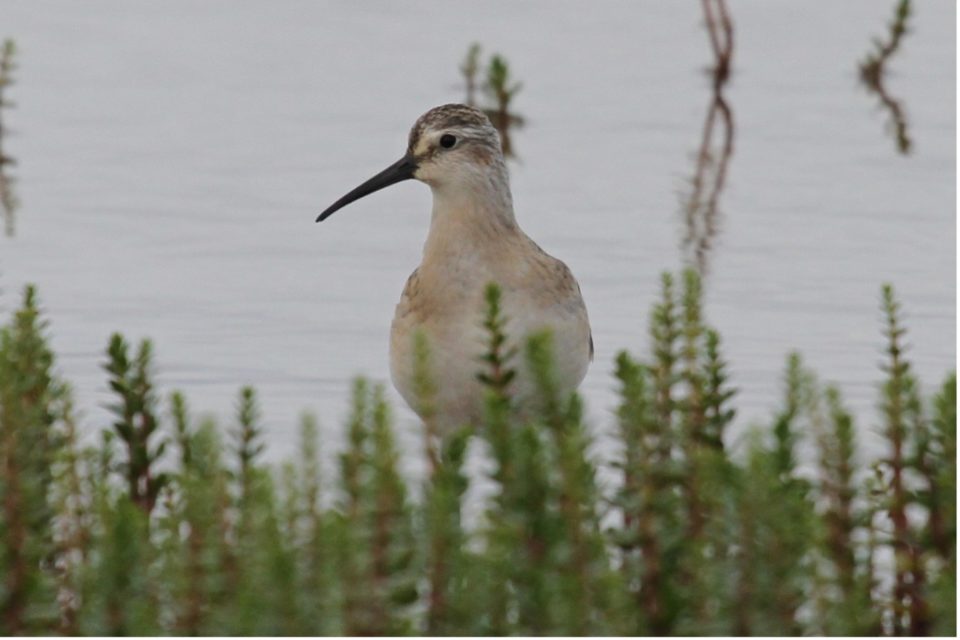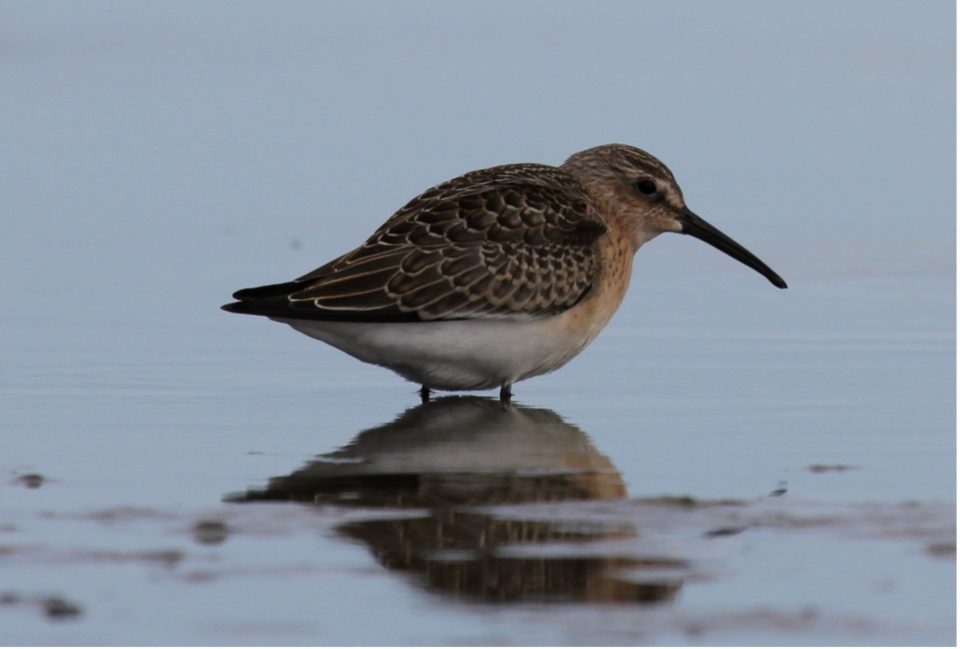
My Curlew Sandpiper passion
-
Species
Bird migration is one of nature’s true wonders. The travels of some of these little wanderers are miraculous. On the occasion of World Migratory Bird Day, let’s take a look at one of the very common warblers in Europe.
With a body weight of less than 10 grams, a little bird like the Willow Warbler can cover distances from N Norway to tropical Africa on its annual migration. After spending the northern Winter there it flies back and can return to nearly exactly the same location the next Summer. Mind-boggling!
This is one of the reasons that I am a bird-ringer. Through the ringing of birds, we have gained a lot of the initial understanding about the migration of birds. Ring recoveries allow to connect the place of ringing with the location of recovery, via the flight of the bird. Nowadays there are new techniques in addition to ringing that inform us about the routes and timings of some of these travels, sometimes in a lot of detail. Think of telemetry through satellites or other trackers.
Many of the birds that we find in wetlands perform such migrations. From the big ones like cranes, swans, geese and ducks to the less conspicuous smaller birds like the reed warblers. One that I particularly like is the Curlew Sandpiper (Calidris ferruginea), a small wader. It breeds in the high Arctic in tundra habitat, while in the rest of the year, it is mainly found on mudflats or muddy shorelines, where it feeds on little invertebrates with its elegantly curved bill.
Birds are protected by feathers and these wear out throughout the year, so they have to regularly renew them in a process called moult. Many birds moult twice a year. This means they have a summer and a winter plumage and these can look rather differently. The Curlew Sandpiper is warm- rusty brown in its summer plumage. Its scientific species name ferruginea refers to that. In winter they are rather less conspicuous and they form often large flocks of grey birds (where apparently their genus name Calidris comes from).

The miraculous travel of the Curlew Sandpiper takes them all the way from the High Arctic to tropical areas, often even crossing the Equator. They undertake this long journey by stopping in places – in many cases intertidal wetlands – where the conditions are favourable for them to rest and feed to refill their travel reserves. For me, it feels very special to be meeting these birds at so many locations along their flyways.
I have had the privilege of observing Curlew Sandpipers in their Arctic breeding habitat, in the Kuznets area in Northern Nenetsky, Russia. Lying on my belly in the tundra vegetation at the edge of a small pool with muddy edges amidst birds like Ruff and Yellow-breasted Bunting, with my binoculars focussed on a small group of Curlew Sandpipers. Adults moulting out of summer plumage mixed with juveniles from this year, happily foraging together with a few Dunlin. The birds in the Arctic are often not shy and as long as you don’t move too much, they will approach you quite closely. The main challenge is to resist your movements, with zillions of mosquitoes taking advantage of your presence. The experience however of being able to watch these birds from so close by, undisturbed in their behaviour is fantastic, generating an ever-lasting memory. The itch of mosquito bites is only temporary.

I have seen Curlew Sandpipers on a number of other locations along their flyways. They migrate in a number of flyways in the Palearctic. For example in the East Atlantic Flyway, I have seen them In the Netherlands, stopping over in large numbers in the Waddensea. Mainly coastal birds, I remember seeing them on a number of occasions in inland wetlands, like the Ooijpolder close to where I live. In my early birdwatching days in the 1970’s I remember going out for them as they were quite a treat to find, especially if they still had some of that fantastic rusty summer plumage.
Further south in the East Atlantic Flyway, in the Banc d’Arguin, one of the most important sites for shorebirds in the East Atlantic Flyway, I have counted Curlew Sandpipers in large numbers. In the year 2000, I organised a survey of this fantastic intertidal wetland off the coast of Mauritania and we counted nearly 250.000 Curlew Sandpipers! Unforgettable numbers in an unforgettable landscape! The CurlewSands migrate even further south in the EAF and I have had the pleasure of seeing them there e.g. in the Bijagos in Guinea Bissau, in Gabon and even as far south as South Africa.
In the West Asian – East African Flyway they occur in large numbers in Barr Al Hikman, in Oman, where we counted some 15000 Curlew Sandpipers around January in the years 2016 and 2017. Those are birds that over-winter there. In March we counted roughly double those numbers, when birds migrating from their wintering areas further south also visit the area. I have been back to Barr Al Hikman every year since 2016 and ringed and colour-marked Curlew Sandpipers (and other species) there to understand better how they use the area. I vividly remember the special nights with the ringing and the many hours of looking for colour rings and observing them foraging on the mudflats. Similarly unerasable memories like the ones from Nenetsky and Banc d’Arguin.
The Curlew Sandpiper is close to my heart. With all the data that volunteers like me and many others have gathered we are finding that their numbers are declining. We want to understand better what may be driving this change. In collaboration with other researchers, I plan to be working on finding out more, for example, how the migrate in the West Asian East African flyway. A tracking study is therefore high on my wishlist to organise. Please join me if you are interested in supporting such an initiative!

